The British government has awarded a £20 million contract for the procurement of key hardware for the next phase of tests for a state-of-the-art rocket and missile protection system, the Trophy Active Protection System (APS), for the Challenger 3 tanks.
The APS, supplied by Rafael, will be tested and integrated with the Challenger 3 tanks to provide enhanced protection against rocket and missile threats.
The unique feature of the APS is its ability to detect an incoming rocket or missile in less than a second and to counter-attack with its own ammunition while identifying the source of the hostile fire for immediate response.

This contract award follows the successful completion of three weeks of assessment phase trials on a Challenger 3 representative system, during which 25 shots were executed, including live intercept shots. The contract will enable the procurement of multiple Trophy Systems and Counter Measures and the necessary test equipment for the qualification and integration activities slated for the upcoming demonstration phase.
The tank is expected to enter service in 2027.
James Cartlidge, the Minister for Defence Procurement, emphasised the significance of this contract: “This contract will be a key step towards ensuring our Challenger 3 tanks are equipped with the most advanced protection systems available… Procurement of this kind boosts the UK’s sustained assurance to maintaining our world-leading capabilities in land warfare and helps ensure that Challenger 3 will be an exceptional capability.”
David Tomlin, APS lead for the Land Equipment Operating Centre at DE&S, expressed confidence in the project’s progress: “Assessment Phase Trials of the APS has completed, and we now have confidence to move forward to the next phase… Securing these Trophy long lead items is another step forward in securing a world class protection system for our soldiers on the front line.”
The demonstration phase is slated to begin in 2024, with Rafael Defence Systems and RBSL, as the Design Authority for the Challenger 3 tanks, set to conduct the testing at Rafael’s facility in Israel and at UK Test ranges.





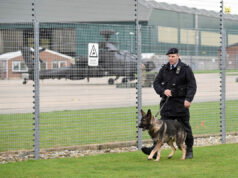

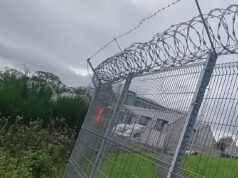

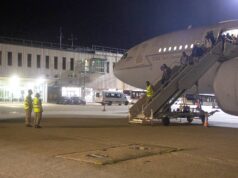

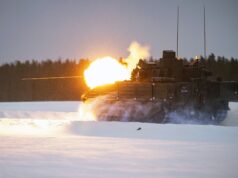
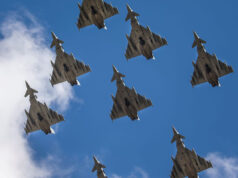

Despite us having the highest inflations in the G7 the Pound is at 10 month and 14 month highs against the Dollar and the Euro respectively and worth almost a 1/3rd more than its low. This should mean the immediate threat of a squeeze on equipment budgets caused by the weak Pound vs Dollar following Boris/Truss shenanigans has now rescinded, though the wage budget will be squeezed.
Its very unusual for a currency to be strengthening in value at the same time its experiencing heavy inflation and when inflation stabilises next year (with some hefty deflation in some industry sectors as energy and raw material prices adjustments filter through) we may find ourselves as a nation having effectively successfully inflated away a sizeable chunk of the national debt while enjoying higher tax revenues from the increased wages. This may mean a government in 12-24 months time suddenly finds itself with extremely healthy finances.
/Ruminations
Unfortunately the price of the £ doesn’t reflect on the amount of £’s available so we still can’t afford an army.
Does when half the procurement budget is going on buying equipment priced in dollars.
Half? Those F-35s are more expensive than I first thought!
There is also Poseidon, Wedgetail, MK41 VLS, Protector, tubes for the Dreadnoughts, Apache. I’m sure there is more that I can’t think of right now. Probably doesn’t add up to half mind.
Even those contracts denominated in Sterling will cost more. T31 was renegotiated recently I believe.
In perennially straightened times, I don’t mind one of our Armed Forces saying we need a piece of equipment, achieving funding, getting it, and then finding out in due course that it was not the perhaps best choice. No one is that great at future-reading. What I do mind, is #s of attempts at 1&2, getting nothing – & starting again.
Using the word “despite” in the first sentence isn’t right, since high inflation will always lead to an increase in the value of the national currency.
I agree, though, this is good and with reined in spending the UK may find ifs finances in healthier order soon enough.
Not strictly true, high inflation only increases value of currency if the inflation is higher than that of the country which uses the other currency. In this case ours is higher than the US and so brings more value. It also depends on how the rest of the world considers the stability of the currency, if they think the government might default then it hits the value.
This is true, but generally high inflation is referred to as relative, often as compared to the US since its dollar is the worlds reserve currency. In addition, it is not directly inflation that is important – it is the perception and actuality that interest rates in that country will rise. I assume you meant stability of the country’s politics as opposed to the stability of the currency, since the entire discussion at hand related to the effect of a country’s inflation on the currency, thus indicating instability. And, yes, in that case you would be right, since the threat of a default would stymie investment into a country’s gilts/bonds and hamper any appreciation. The only major exception to this rule appears to be the US, where financiers appear to religiously believe that any threat of a default is irrelevant and that it could never materialise.
High inflation will always lead to a fall in the value of the national currency not a rise as you need more of it to purchase the same quantity of goods while its less attractive for foreign investors to own debt, liquid cash or shares denominated in that currency because its falling in relative purchasing power by more than you are earning in interest from its borrower.
For example look at Turkey which has averaged inflation rates over 70% during the last few years and how the Lira has cratered.
2022:
Sierra Leone: Inflation rate 27.2%, currency has lost 60% of its value.
Iranian Real: Inflation rate 50%, currency has lost 60% of its value.
Suriname dollar: Inflation rate 52.5%, currency has lost 90% of its value.
Argentina Peso: Inflation rate 72.4% currency has lost 44%.
Ok, I’ll start with addressing the examples you have provided. These are incredibly poor selections for a macroeconomic case study due to their immense lack of macroeconomic credibility and stability. All of the countries provided bar Sierra Leone are bordering on extreme inflation – a term for which there is no accepted threshold – but not quite hyperinflation.
Goods have nothing to do with exchange rates. I mean, they are affected BY exchange rates but they do not have an effect on THEM. The reason that inflation leads to a currency appreciating is due to the perception that a country will be forced to either reduce spending, which leads to the following:
Reduced Spending -> Reduced Money Supply -> Reduced Availability of the National Currency on Markets -> Appreciation
Or, that the country will be forced to increase interest rates, which leads to the following two things:
1) Increased Appeal of Gilts/Bonds Internationally -> These must be purchased in the National Currency -> Increased Demand for National Currency -> Appreciation
2) Increased Appeal of Gilts/Bonds Domestically -> Reduced Money Supply (in a fractional reserve system such as the UK) -> Reduced Availability of the National Currency on Markets -> Appreciation
The reason that this basic macroeconomic principle has not worked out in the countries you have provided is due to their failure to attempt to curb inflation, or if they little faith in the country’s ability to pay off its debt – so a high risk. Please note, high inflation is relative and should be compared between two nations, and the effect interest rates should factor in the risk of purchasing both debt in both countries. For example, a 2% interest rate change in the US and a 4% interest rate change in Greece will definitely lead to capital flowing towards the US despite a lower interest rate increase.
Hope this helps,
eclipse
Ok then, please give examples of countries with high inflation and an appreciating currency outside the current unique circumstances. You seem to have a basic flaw in your understanding, that your thinking only in narrow Fiscal terms rather than Macro Economics, you believe “Reduced Spending -> Reduced Money Supply”. This is only a causal relation with heavy government spending increases financed by public borrowing rather than taxation where a large quantity of fresh gilts are being issued swamping the market, it is the opposite with consumer spending where reduced demand leads to accumulation of capital in banks who are forced to decrease rates to attract borrowers. Reduced consumer demand and/or falling prices is deflationary not inflationary.
“1)” This is tackled through the release of reserve currency, Yankee Bonds, Eurodollar bonds and the recent phenomena of Central Banks having agreements between each other to allow limited foreign denominated bond issues.
“2)” Yes this is an issue with banks preferring the attractive domestic bond rates over lending to consumers leading to reduced supply but it has no real impact on Forex prices as the money is being recycled domestically. Foreign banks are less likely to be attracted as domestic banks as they are not experiencing the same level of inflation and thus its a riskier investment.
Good evening once more,
As much as this discussion is entertaining – I’m interested what credentials you have in the economic sphere,
I recognise that you may have an understanding of how the economy works but it is flawed. I did not say, at any point in my explanation, that inflation directly leads to appreciation. Instead, I said that this will lead to, in the majority of developed economies, some kind of contractionary fiscal or monetary response that will inevitably cause appreciation. As such, we may, at macroeconomic scale, assume that a period of inflation in a country will result in appreciation, but not that the inflation itself is causing the appreciation.
You, strangely, refer to my explanation as being in “fiscal terms” although I believe that my argument was centred mostly around interest rates, which do not constitute a part of fiscal policy.
The sentence that reads, “This is only a causal relation with heavy government spending increases financed by public borrowing rather than taxation where a large quantity of fresh gilts are being issued swamping the market, it is the opposite with consumer spending where reduced demand leads to accumulation of capital in banks who are forced to decrease rates to attract borrowers” is much too long for me to comprehend. In the first clause you say something about increasing spending when my first point is literally how the government may try to cut spending in an inflationary period. I thought that the concept that reduced government spending would negatively impact the money supply was basic, and stems from the MSxV=YxPL formula. The next clause completely baffles me, since I fail to understand how exactly accumulation of capital is realistically increasing while still in an inflationary period, and, furthermore, what bank rates have to do with this – they are chiefly influenced by the policy rate at the BoE, Fed, etc.
1) I have no clue what is being tackled.
2) The money isn’t being recycled it’s being held by the Bank of England, the entire idea of selling gilts during inflation is to cut the money supply. Hence, then permitting that money to leave the Bank would destroy the entire point of the operation.
As for providing examples, you have somewhat limited me since you request ones outside these supposedly “unique circumstances” (although I don’t see what makes them unique). It is rare in history for us to see such levels of inflation in developed economies, but I would encourage you to explore the behaviour of the US dollar a) when the government DID use tools to combat inflation (such as raising interest rates) and when it didn’t. Rising interest rates always lead to appreciation, and inflation in a country means that higher interest rates are required.
BA in Economics and International Relations
I have an MA (Oxon) in PPE, an MBA, and I work at a US financial institution. Waiting for your response to my above post.
Market data today supporting my assertion that the UK is recovering faster due to inflation falling out, the peak interest rate forecast has been downgraded from 6.5% to 5.75% while markets are pricing in a possible 25 basis point rather than 50 basis point rise next month.
(1) Wasnt a question from you but a statement.
(2) Yes this process is called Quantitive Easing, its a Macroeconomic Monetary Policy by Central Banks not a Fiscal policy concerned with government tax and spend.
If you look at the performance of the pound today, you will note it has fallen due to inflation falling (as a result of markets expecting less increases in interest rates) , so I don’t see how that supports your assertion that high inflation leads to a weaker pound.
1) I’m aware, but I was hoping for an elaboration.
2) Yes, I’m familiar with the policy… but this is not it. Quantitative easing is the opposite – it is when the Bank of England purchases bonds in order to push interest rates lower. The Bank is doing the opposite currently.
Pound-dollar sell off began midday yesterday, ahead of the market expectation beating result and is predominantly banking some of the gains from Forex speculation with bullish Pound speculation reaching its highest since 2007 yesterday according to the US CFTC.
So cable expectations being the most bullish since 2007 (an assertion I question as I believe the most bullish positions would have been slightly before and slightly after Brexit) led to it falling? Makes sense.
I’m not quite sure where you’re going with this too, as three of us now – AJP, Euan, and myself – have explained that your claims are incorrect. The latter two, as we have elaborated, have experience working in finances and forex. I am unsure of AJP’s lines of education and work.
The pound is high precisely because of high inflation. The money ,markets believe the bank of England will push interest rates higher, making returns on sterling investment even better
Well someone must be right. Posters have covered all bases with replies😂😂😂😂😂😂
What I do know is stuffs getting expensive and the tiny wage raise I’ve had hasn’t made enough of a difference to even cover 1/5th of the increases.
AJP is right, I’ll explain below why Watcherzero is wrong.
Eclipse and AJP are correct. I trade currencies for a living.
Bond yields are around 4.5 to 5% while inflation is around 9%. They are losing money and would continue to do so even if interest rates went up several more percent.
Spot on, I’ve got a longer explanation somewhere here for anyone interested.
It’s Sunday morning here in Sydney andy ☕ hasn’t kicked in yet and we’re talking inflation on a defence site… only in the 🇬🇧! Absolutely love it!! Please carry on… Lol 😁
With you there, Q. I’m scrolling up and down to see if I’ve missed something! This piece is about APS for Ch3 and straight away Watcherzero launches a long diatribe on inflation. Er, why?
It would be much less peculiar were he to be on the right side of this argument! An enjoyable discussion, regardless.
There is a simple reason for the pound strengthening. It was under valued. This led to a flurry of British stocks, shares and whole companies being bought out. UK listed companies were seen as a comparative bargain.
The UK is without doubt about to get huge inward investment from abroad over the next 10-15 years as Spain, Italy, Greece, North Africa all become virtually uninhabitable due to global warming. Where else will European wine houses grow crops?
Where else will people be able to go on holiday without running the risk of heat stroke.
UK, Northern France, Scandinavian countries. Even I guess northern Germany.
I wonder if Poland will select them for their MBT and IFVs going forward.
https://www.armyrecognition.com/images/stories/news/2021/november/K2NO_Main_Battle_Tank_proposal_from_South_Korea_Hyundai_Rotem_for_Norwegian_army_925_001.jpg
Active Protection Systems for the Fighting Vehicles of the Polish Armed Forces
”Over the last couple of decades, the necessity to equip armoured fighting vehicles with new protection measures has become obvious, to complement a myriad of armour types. Hard-kill active protection systems allow for a great increase in fighting vehicles’ survivability and crew protection levels.
Considering the battlefield experience gathered in Ukraine for instance, the procurement of systems as such for the Polish military has now become one of the burning priorities. Let us have a closer look at a couple of designs that could be potentially acquired.”
https://defence24.com/industry/active-protection-systems-for-the-fighting-vehicles-of-the-polish-armed-forces
There will need to be a good margin of R&D as these systems will quickly be updated during the service life of CH3. No MBT will be fielded without such systems in the coming years. Kamazie drones will be one major threat for this countermeasure and possibly in multiple.
It certainly needs to be a robust system and I would hope they have adjusted their requirements in light of lessons learned in Ukraine were tanks have been disabled by cheap drone attacks.
I wonder if any system can adequately protect against a massed attack by advanced systems like Spear3?
If they can’t, then MBT’s are about as relevant today as Battleships.
Tell that to the Ukrainians! They seem to think the tank is VERY relevant.
Bit like the argument in the MoD around 1938 which asked was the Spitfire the first of a new generation of fighters in uk service or actually simply the last in the then present generation of fighters with the twin Whirlwind deemed to be the actual future by many there for fighter design. It’s demise certainly proved to be rather premature in that argument, certainly postponed, but there was logic in both sides of that argument which the war, through necessity sort of obscured the true answer to, and then jets completely changed the whole equation anyway.
I am not sure that we aren’t in a similar scenario with tanks and this war might not be an exact science in determining the eventual outcome, because like that other war you don’t necessarily have the time to theorise over best practice, you need what you know and are experienced in and top end counter solutions to the tank may not exist in numbers or actuality as yet, to dictate matters 5 to 10 years down the line while something significant might change the whole argument again. Too close to call I reckon.
That’s an interesting take on it. The Whirlwind was so close to being a fantastic fighter.
Unfortunately it was seconded the Kestrel engine that hamstrung the design and the demands of building Hurricane and Spitfire meant Whirlwind never received development and quietly faded away, not diminishing it’s contribution as a strike fighter in 41/42.
Plus, one engine to get a fighter into the air, against two, when your backs against the wall then it’s simply no competition!
Had development continued, then Whirlwind had potential to be a fantastic fighter, re-designed with later mark Merlins, stretched to restore it’s CofG increasing fuel capacity and it would have been an incredible 400mph, long range strike fighter and bomber escort.
With respect Jacko, that doesn’t answer the question, I could counter that with, we should still have battleships, because they certainly came in handy when we sunk the Bismarck!
Simple drones and man op systems have shown MBT vulnerability, that’s a snap shot of today’s tank use.
So today they certainly have utility, but what of 2030+ ?
My point being, if we are developing Spear3 as an anti armour system, other countries will be building similar.
If MBT self defense systems can’t defeat a massed attack by systems like these, then obsolescence is just around the corner for the MBT.
Picture a scene where 12 Typhoon / Tempest and another 12 loyal wingman lob Spear 3 at an Armoured Regiment depoyed in the field, you would have an absolute mass of sophisticated weapons, launching from 100 miles away, using AI to identify targets and deconflicting with each other.
They will effectively wipe out the fighting strength of the Regiment in a single Airstrike!
If the promised capability works, then it’s game over for massed MBT’s and Battleship type obsolescence is just round the corner.
I suppose at least Chally 3 gets us to the finish line….
Ok so by that logic and I see your point ANY formation of land vehicles MBTs AFV s SPGs etc simply will not be able to survive the modern battlefield! All warfare will conducted from the air. So there goes the need for an army at all!
It’s certainly a big question mark over Armies as currently configured Jacko….
As said, at least Chally 3 keeps us in the game for the moment, but I feel by 2040, MBT’s will be museum pieces. Unless of course extremely robust and very expensive self defense systems, capable of destroying sophisticated mass attacks can be developed???
Such systems would have to be incredibly capable and deployable by an individual MBT, who knows….
Maybe they will all be trundling around the battlefield towing a trailer with a Phalanx on it!
John, do you think drones are invulnerable to kinetic or electronic attack?
Thing about a Battleship been obsolete John, when you think about how many missiles hit could battleship take and survive,were if you think back to 82, just food for thought as our American friend’s pointed out to the UK in the day when USN battle wagons not the seas again .
Sorry hit seas 🙄😀
No battleship can survive a diving missile to its ammo. Roma was sunk by 2 guided diving 1400kg bombs
True but that was a diecit hit like Hood, if not diecit more chance of survive not like we’ll even see the likes of them again. 👍
Oh no John! Advocating the end of the tank. Just because there is a new anti-tank weapon out there. The first anti-tank weapon was fielded in 1916. ATGWs from 1959. The naysayers, predicting the end of the tank were all wrong.
If the tank is irrelevant then lesser protected equipments are too – which means everything must be scrapped. No armies. No wars. I doubt it.
Evening Graham, I’m not advocating it, just posing a hypothetical 2030+ scenario were systems like Spear3 are widely deployed by modern militaries.
I can’t see a future for conventional Armoured mass as we see it today, it will be ripped apart by a peer country.
The difference between previous generations of anti armour systems, is nothing comes close to offering the battlefield dominance that Spear3 promises.
What sort of Air defence system developed or in development could stop a swarm of 100 + Spear3, possibly knock out a third of them, if, you deployed a mass of different air defence assets among your deployed assets…
They are still going to kill enough of your MBT’s to effectively knock you out of the fight….
All this carnage in one air strike, by 12 aircraft and 12 loyal wingman from 100 miles away!
Even the RAF could muster that sort of mass in the future.
Imagine if the number was 24 Loyal wingman along with your 12 Tempest, they would destroy every single deployed asset you had!
I sure as hell wouldn’t want to be a tanker in 2035, facing a peer enemy!
I recall the Egyptians decimating Israeli tanks in the Yom Kippur war in 1973 with their Sagger ATGMs etc. Many informed people predicted the demise of the tank then.
To every new weapon a counter system is developed. It will be no different with Spear 3. Ukraine and Israel have proved adept at intercepting incoming missiles not of the Spear 3 type obviously) – just saying that effective counters get fielded to hugely serious threats.
Not saying a swarm of 100+ Swarm3s wouldn’t decimate armoured forces if a counter had not been devised or exisitng counters were ineffective. They would.
Back to one of my points, if you think tanks have had their day, then IFVs have too, SPGs have too. So we disband armoured forces and are left with Protected Mobility medium weight forces – what if Spear 3 type weapons are launched at those as those PM forces are now the highest value target.
We end up with dismounted infantry operating out of trenches with good overhead cover. Back to WW1-era.
I can’t see it happening.
No-one is yet scrapping the tank…except for Belgium (and that was a 2014 budget cut).
The Crystal ball tells all Graham, we will see 10 years from now where the direction of travel lays…
Perhaps it will be all drones firing lasers and terminators slugging it out on the ground, while hypersonic missiles rain down from space!
That’s assuming the platform carrying the weapon system is uncontested,airspace is controlled by one side and that targets are easily identified. So your assumptions is only valid if all favourable factors are in place. Remember all players have a vote. SPEAR 3 Operational range is 80 miles which you can guarantee its effective range will be less. 80 miles isn’t a huge distance in an air battle.
Lets not even get into SEAD/DEAD. The air assets required to launch a SEAD/DEAD package is ridiculous (something that the UK cannot achieve alone at present). That would be required in order to set the conditions to get in and launch the type of strike you suggest and is just not very likely. 12 manned platforms plus 12-24 loyal wingman platforms to conduct an anti-armour mission, not happening, not with current UK doctrine. And I don’t foresee that changing any time soon.
An 80 mile launch window is actually absolutely enormous, especially if you are launching from stealthy platforms and those missiles are approaching from all points of the compass..
The F35B can carry 8 internally, Typhoon will be able to carry 16 as a max loadout, Tempest, (probably)16 internally.
Current UK doctrine is already shifting rapidly, the line between manned and unmanned blurring all the time.
I would confidently say the RAF will probably be operating 80-100 Loyal wingmen by 2035, alongside a Typhoon and Tempest mix of ‘about’ 100 aircraft.
Loyal wingmen will be a big part of future ops and will probably make up 30-50% of a typical 2030’s RAF airstrike.
Re SEAD, don’t forget the powerful electronic attack capabilities of next generation platforms (captor E being round the corner) and SPEAR ER, these are the tools that will allow the RAF to kick down the door and drop the hammer in the 2030’s.
Sorry John but i’m not sure where you pull your information from.
‘An 80 mile launch window is actually absolutely enormous, especially if you are launching from stealthy platforms and those missiles are approaching from all points of the compass’..
You’re correct, an 80 mile launch window is enormous, however what I said was that 80 miles in the air battle isn’t a huge distance, meaning, to be inside that range to use the weapon system then you are well inside the MEZ of any of our potential adversaries IAD’s. People keep throwing around the term ‘Stealth’. In the scenario you have suggested, 12+24 platforms, whatever ‘stealth’ properties a platform had is negated due to the mass of platforms in the packet. plus you mention the internal weapons load of F35 and Tempest, again ‘stealth’ negated as soon as the weapons bay doors are open to release ordnance. And ‘all points of the compass’.So those platforms are going to be beyond the FLOT, and have already pushed way behind the FLET? That is an Air C2 dogs bowl that no-one wants a taste of. And I’m not even going to go into the numbers of aircraft that you’re suggesting would be used in the scenario you’ve posed, 12 manned (a full Sqn), just not happening for an anti-armour mission.
‘Loyal wingmen will be a big part of future ops and will probably make up 30-50% of a typical 2030’s RAF airstrike’.
The loyal wingman project, Proj Mosquito was scrapped over a year ago. The on-going project ‘LANCA’ will not deliver anything close to what Mosquito was proposing and you think we will be operating 80-100 of whatever the chosen system is by 2035 at anywhere near IOC never mind FOC then i’m sorry to say you’re living in dream land.
‘Current UK doctrine is already shifting rapidly, the line between manned and unmanned blurring all the time’.
Over the last 15 years of my career in uniform and what I continue to do as a reservist now is work in the area of Air/Avn warfare, Air Land Integration, EW, Joint Fires and Doctrine. I can tell you now that Doctrine in this area is not shifting rapidly, it is shifting, it’s always shifting but at nowhere near the pace at which you’re suggesting and the line between manned and unmanned is certainly not blurred in UK terms, in-fact our current manned/unmanned operating procedures are so black and white that they are almost unworkable.
‘Re SEAD, don’t forget the powerful electronic attack capabilities of next generation platforms (captor E being round the corner) and SPEAR ER, these are the tools that will allow the RAF to kick down the door and drop the hammer in the 2030’s’.
And as I said previously, the enemy also get a vote. It’s naive to think that they aren’t developing to counter what we are developing, and I would put money on them being able to do it quicker than us.
Morning Sky blue, first off, I mentioned a hypothetical airstrike in 2035, at no point did I suggest they are all chugging along together in a nice fingertip formation at 20,000ft.
They obviously wouldn’t and don’t need to be, they would be stretched out, miles apart at different altitudes…
80 miles is a large area, it’s actually likely to be in excess of 100 miles in reality.
Let’s put it this way, an old shooting friend of mine was a pilot for 47 Sqn for years, his opinion on so called sophisticated air defence systems is somewhat different from yours. They landed their incredibly un-stealthy old K model C130’s in places “you wouldn’t believe”, his words, without obviously ever saying where.
In exercises they regularly totally embarrassed the US Airforce, by sneaking around integrated Air defence systems that were actually looking for them!
Turn the transponders off and even an Airliner gets tricky to find if it keeps away from surveillance radars ..
In balance, this was 20 years ago, but you could argue that even Uncle Sam had more mass than today then, so perhaps less sophisticated, but more of it ..
No air defence system can maintain 100% coverage 24/7, especially if it’s out in the sticks, covering a deployed armoured formation.
No one has the number of deployable air defence systems to cover that, with the possible exception of the US and I can’t see us attacking the US Army!
As someone who is currently serving, you will be well aware of the current shortage of aircrew and this is getting worse with zero prospect of that changing.
The answer is capable Loyal Wingmen to return mass and I would bet my house on these being fielded in quantity 12 years from now.
Consider the Australian option, it’s close to being an operational platform now, it can be rapidly built and delivered … It will happen.
The latest Abram’s has a 30mm RWS mounted too. Might be a bit over the top but would/could something like that be adopted for the CR3?
Anti missile system for tanks, we are really in XXI century.
How many are we getting?
I think about 60.
That was said a long time ago. I doubt it would still be only 60 sets.
Nowhere near enough. Any APC, IFV or recce vehicle in the front line needs these or risk being mobile coffins for their crews.
Poland could have been a great partner for the C3. Just because we would not reopen the production line for our limited numbers, doesn’t mean that with enough orders from a third country, it couldn’t be done. Poland could have had a large part of the hardware for manufacture at their factories.
My personal feeling is that we need to go all in in searching out cooperative military projects with Poland esp in land warfare though where that opportunity sits now we have an Anglo German conglomerate dictating matters here isn’t clear. Fact is with their massive movement to becoming a major European military power, the desire to build as much as possible in Poland and their animosity to Germany and France one can’t but feel we have missed out on a great opportunity to work with them on a new generation of equipment and open up opportunities to supply others in Eastern Europe and well beyond with Ukraine an obvious future partner in such ventures. It rather looks like at least for the foreseeable future South Korea will be the main beneficially however sadly with the UK only agreeing more specialist wins with missiles and the equipment to support them in terms of land warfare platforms.
At least the UK has had success with Poland adopting CAMM and the A140. Hopefully CAMM will definitely be further developed for the UK to adopt.
Think CH3 could maybe an unknown winner against all the western and US, Korean tanks CH2 getting long in the tooth but still holding its own .🤔
It is, there was a push a while back led by that Drummond bloke (who just happend to be employed by the people who make the Leopard 2) for the Uk to ditch the Chally for the Leo 2. Events in Syria revealed thats it’s armour designed for the 1980s (thick at the front weak at the sides) wasnt fit for purpose on the modern battlefield, The Russians took note and have knocked out a nbr of L2 tanks by targeting the side of the turret with drones.. In contrast the Chally 2 was designed with all around armour which as we saw in iraq can survive 14 RPG strikes and a milan and be back patrolling the next day after the local REME LAD worked over night on it.
The L2 losses. Is this the 6th or 7th June attack at Novopokrovk (35 miles southeast of Zaporizhzhia)?
Posted by the Russians on social media – so might it not be ‘fake news’?
Thanks for the plug for REME!
Graham wrote:
There is actual footage of a Lancet 3 loitering muntion taking out a Leo2A6 by striking the side. Granted the Lancet was the latest iteration which has a longer range and well as a larger warhead. But the fact it was an A6 suprised a lot of people and the Russians revealed last night an even newer version of the lancet which they are now producing on mass.
Thanks mate. Hope UKR does not lose too many western tanks. It might make some i n the West have doubts about sending ‘bullet magnets’.
I think the Russians have realised that Loitering munitions afford a longer-range strike capability than that currently in place by the use of ATGM and have ramped up production of their home grown weapons as well as increased research into such.
Funny enough due to the even slower speed of such, the main and only effective warhead they can use is the HEAT round and ERA is extremely effective against such. Which the Ukrainians have realised and have put in place a number of ad hoc solutions such as wire fencing (A very light weight cope cage) which has proved successful in catching the LM and of course the ubiquitous addition of ERA blocks
https://i.postimg.cc/V6Gbj70h/Fz8j3q7-Xo-AIw-Zd-B.jpg
Pretty sure that vehicles like the Challenger and the M1 have less to fear from Chemical warheads (No doubt the British Military and their masters in Whitehall will leave it at that firm in the belief that a no way will be seen in Europe until 2050 at the earliest and let’s not forget how the use of a trans flag protects the user from everything and anything,) But others such as the Turks have invested in ECM (just as the Russians are doing) in which to mitigate the use of LM as much as possible
Many thanks. I am surprised that the flimsy cope cages which may not fully cover the top surface are so effective – Russians had them too?
Are we investing in LM?
👍
Thats a funny picture seeing as we have been informed that for Challenger 3 the TOGS2 will be removed from the top of the barrel.
It’s got more lumps and warts than an old witch on it.
Main issues I would want to know the answer to is: who is making the ammo, spares for the APS?
If it’s Israel can they be trusted to supply what the U.K. needs no matter the situation?
It’s not totally out of a situation that the U.K. goes to help a Middle East/African country and Israel backs the other side. What then?
I actually thought the U.K. had an active protection system in development a while ago.
Right google help me out
The image is of the Challenger 2 Medusa upgrade. The same image is on the UKdefencejournal article about the upgrade.
Isn’t this the same amount £20m being spent on the cameras for the Warrior’s? Why don’t they get a better deal on the cameras and spend a bit more on the APS and put in on all the CR3s?
I don’t think this the whole budget for the Trophy buy unless they started to cut the numbers.
Should be a good solution to the kamikaze drone problem, are the plans to equip the rest of the afv fleet with them?